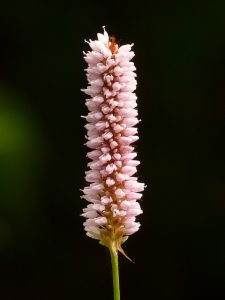
Japanese Knotweed is a very invasive plant. It’s easy enough to find in your garden but it’s mostly in public areas. In most cases, it grows through the foundations of buildings and takes over landscapes. If there is Japanese Knotweed in your property, it will have a huge negative impact on the value. Note that, a mortgage lender will reject a mortgage application if there is any Japanese Knotweed growing there.
How Close Is It To Me?
Across the UK, there have been numerous reported cases of Japanese Knotweed in both residential and commercial properties. The Environment Agency recently commissioned a new way of tracking Japanese Knotweed using an app. The data collected pointed to 6,000 locations of the plant. The data is very useful for people who are looking to buy new houses so they can have an idea of what to avoid. There are multiple ways of getting rid of Japanese Knotweed. These include the following;
• Using tarps to smother it
• Spraying it with herbicide
• Digging out the rhizomes
• Hiring professional removal services
• Cutting it to the ground
Is It Possible To Get Rid Of Japanese Knotweed By Myself?
Keep in mind that Japanese Knotweed infestations can vary. Here’s what you need to know about permanently removing Japanese Knotweed.
• Identify the plant as soon as possible to prevent further damage and growth.
• Cut it down and remove the canes. Make sure you cut the canes as close to the ground as possible. Don’t forget to remove the cut pieces from your garden or lawn to prevent regrowth.
• Apply a Glyphosate-based weedkiller. You should spray it on the plants immediately after you have cut down the canes. You should only spray the specific Japanese Knotweed plants since the weedkiller might destroy every plant or vegetation it is sprayed on.
• Wait for 7 days before you start pulling out the weed. It will give the herbicide enough time to target the plant. Once the 7 days have passed, you can remove the Japanese Knotweed and pull it out using the roots for the best removal results.
• Mow your plants every week. It’s the best way to remove any remaining or re-growing. Make sure you cut down the plants as short as possible every week since it will kill or weaken the plant completely.
• Now, you can reapply glyphosate. Keep in mind that applying it once will not kill the plant immediately. However, professional Japanese Knotweed removers recommend that the weedkiller should be applied at least twice every year. You should do this around the time of the year when the plant thrives.
• Call a professional. Keep in mind that it’s quite difficult to fully remove Japanese Knotweed. However, if your DIY attempts have failed, you should call a professional to remove them completely. If you are in need of knotweed insurance then have a look at ‘knotweed insurance backed guarantee‘ for some of the best knotweed insurance.
How Can I Burn Japanese Knotweed?
Once you have removed Japanese Knotweed from your garden, you need to dispose of it as quickly and efficiently as possible to prevent further spreading. You can dispose of Japanese Knotweed in various ways.
• Start by burying the plant and installing a root barrier.
• Call a professional to remove it for you.
• Call specialists to treat the waste so that it is properly disposed of at a licensed landfill.
Yes, these Japanese Knotweed removal methods are effective but the plant will regrow if not disposed of properly. It’s always a good idea to hire a professional.